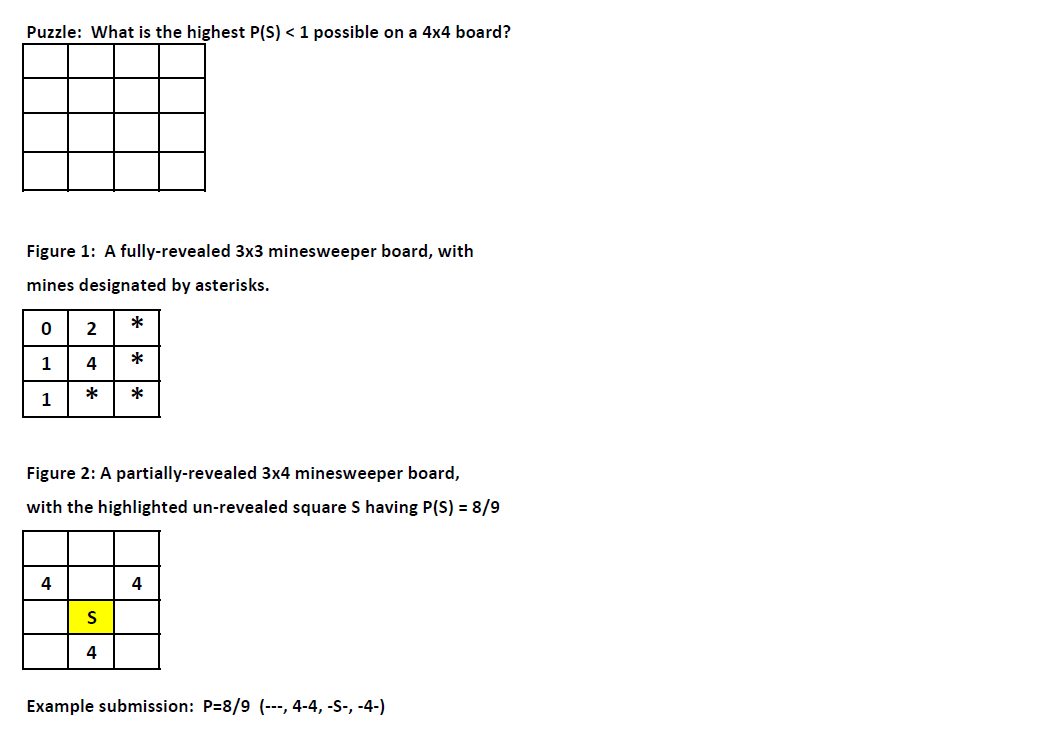Minesweeping
October 2014 : Puzzle
The game minesweeper begins with a grid of un-revealed squares. Some squares contain mines beneath them, and the rest do not. If a square does not contain a mine, then that square will contain a number equal to the number of mines that square borders, even diagonally. Once the board is fully-revealed, every square will contain either a mine or a number. See Figure 1 for an example of a fully-revealed 3×3 minesweeper board, and Figure 2 for an example of a partially-revealed 3×4 minesweeper board.
This month’s puzzle: Consider a partially-revealed minesweeper board. For a given unrevealed square S, let P(S) be the probability that S contains a mine, assuming that all possible solutions for the partially-revealed board are equally likely. Design your own partially-revealed 4x4 minesweeper board, trying to maximize the value of P(S) for the square of your choice, while keeping P(S) less than 1.
For your submission, please submit your P and also your minesweeper grid, using dashes and numbers for each row, as in the example submission under Figure 2.
